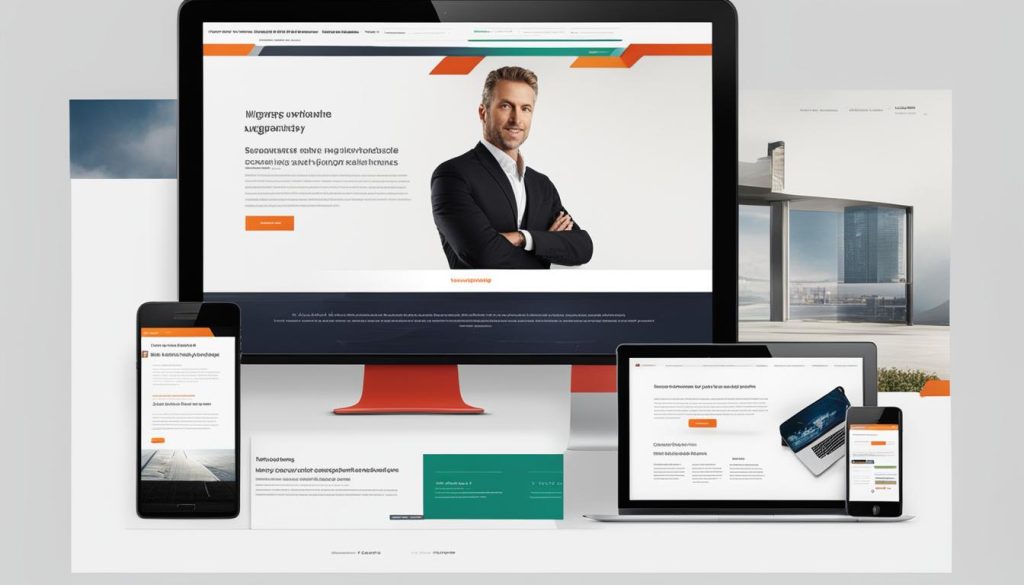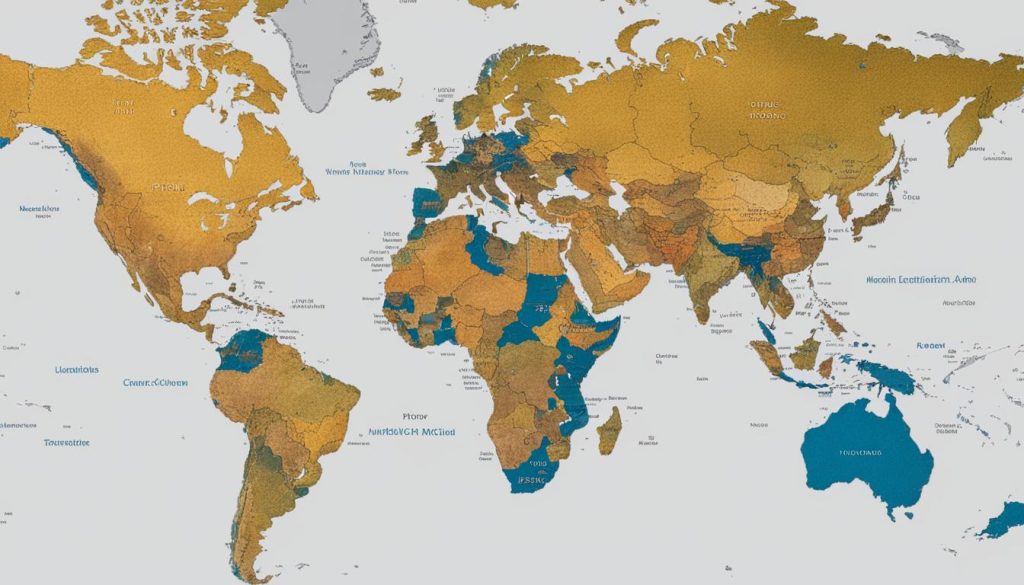In the realm of digital marketing, we’re always on the prowl for cost-effective PPC strategies that can skyrocket returns without draining our bank accounts. It’s a common predicament; businesses like ours pour heart, soul, and cash into Pay Per Click ads strategies, anticipating a flood of customers, only to witness a trickle. It’s exasperating, isn’t it? But what if we told you that hidden within the depths of PPC campaign management are industry secrets waiting to be discovered?
We’ve unearthed a trove of PPC secrets that could potentially double, even triple, our ROI. Thrifty yet fiercely competitive, these insights are distilled from success stories and handed to us on a silver platter. Traditionally veiled by the big guns of PPC firms, these tactics are now within our grasp, and just in the nick of time. With strategies that promise to dramatically reduce spending and magnify our ROI by a staggering 200%, we’re all set to transform our ventures into lucrative endeavours.
Imagine being part of a select few to turn the tide on your PPC outcomes while the gate is still open. We’ve secured exclusive access to a limited-time free report brimming with 12 transformative PPC hacks. The clock’s ticking, and it’s our move to make the most of this window of opportunity. Stay tuned as we dive deep into the world of PPC and emerge victorious.
Key Takeaways
- Embrace PPC secrets that foster savings and skyrocket your campaign’s ROI.
- Access exclusive insights traditionally reserved for high-earning PPC agencies.
- Discover cost-effective PPC strategies that sidestep spending pitfalls.
- Capitalize on time-sensitive information that can revamp your PPC campaigns.
- Unlock the potential to not only compete but excel in the PPC advertising sphere.
- Make informed decisions with a comprehensive guide to efficacious PPC management.
Understanding the Basics of PPC Marketing in Australia
When it comes to PPC marketing Australia, the premise is quite straightforward: you pay a fee each time your ad is clicked – a method known as Pay Per Click advertising. It seems simple enough, but delve deeper and you’ll find a complex web of strategies, especially within platforms such as Google Adwords.
PPC might sound like a gamble at first—the more you bid, the more visible you are. But it’s not just about visibility; it’s also about relevance and conversion. There’s an art to crafting PPC campaigns that not only reach the right audience but also entice them to act, which is where elite Adwords Agencies come into play.
We’re seeing the terrain shift as businesses weave through the PPC basics, seeking methods to pilot their campaigns with finesse. The real challenge lies in navigating this landscape skillfully without inflating costs. Our journey is upping the ante on Pay Per Click advertising proficiency without necessarily hiking up the investment. It’s about being smart, not just spendthrift.
Let’s take a moment to assess how Google Adwords—known for its robust framework for PPC campaigns—can be both a tool for immense growth and a pitfall for the unwary. Without a thorough knowledge of PPC dynamics, you might as well be pouring your dollars into an endless void. Even so, the strategies employed by savvy marketers can render this platform a launchpad for remarkable brand visibility and elevated conversion rates.
Allow us to debunk a few misconceptions while we’re here. While Google Adwords dominates the domain of online advertising, it’s not impenetrable to small players on the market. With the right tactics, any business, irrespective of size, can jostle with the giants on an even keel.
The bedrock of effective PPC practices lies in understanding the relationship between keyword relevance, ad placement, bid amounts, and the resulting performance. Imagine a perfectly balanced scale, where each component is fine-tuned to optimise every cent spent. That, mates, is the sweet spot for cost-efficient PPC marketing in Australia.
To elucidate, here’s an illustrative breakdown of critical components in a PPC campaign:
| Component | Function | Impact on ROI |
|---|---|---|
| Keywords | Triggers ad when matched with search query | Vital for targeted reach and relevance |
| Ad Copy | Conveys offering and incites action | Crucial for click-through and conversion rates |
| Bidding Strategy | Determines ad placement against competitors | Directly affects visibility and cost-per-click |
| Landing Page | Destination where conversion occurs | Essential for completing the conversion funnel |
The outcomes of your PPC marketing in Australia should not leave you tossing and turning at night. Rigorous research, continual optimisation, and a dash of creativity can help you craft a PPC campaign that bears fruit without the burden of excessive costs. As we forge ahead, bear in mind that laying the groundwork correctly and adjusting as you go along can result in a PPC campaign that not only sustains but soars.
Tapping Into Low Budget PPC Hacks for High Impact
We’ve been diligently digging and have struck gold with low budget PPC hacks that promise to elevate our PPC campaigns from just scraping by to significantly boosting returns with minimal outlay. No longer the whispered secrets of high-flying PPC agencies, these strategies have been meticulously corralled to bolster sales growth while keeping an eagle eye on the budget.

It seems like an act of corporate philanthropy, these once covert cost-effective PPC strategies laid out for us to explore. Reams of data, campaigns, successes, and admittedly the odd misfire, have all been distilled into actionable, crystal-clear PPC tips. We can now embrace techniques that were, until recently, behind a paywall – attainable only if you could keep pace with PPC agencies’ price tags.
Ours is now the opportunity to increase PPC ROI with methods that don’t necessitate a financial leap of faith. Following these precepts, our campaigns are about to get a whole lot savvier, with our business reaping the benefits. Here’s a rundown of the low-budget PPC hacks we can start applying right now:
- Using long-tail keywords to target specific queries and reduce costs
- Implementing ad scheduling to display ads at peak performance times
- Capitalising on geotargeting for localised campaign impact
- Refining audiences to ensure our ads are seen by those most likely to convert
- Opting for manual bidding strategies to maintain control over our CPCs
Moreover, these strategies are not just conjecture; they are tested in the fires of the PPC forge. Take for example the case of geotargeting: by honing in on relevant locales, one can slash unnecessary expenditures while upping relevance and engagement. Manual bidding isn’t exactly new territory, but managed efficiently, it allows us to have the reins firmly in hand, meticulously overseeing CPCs – not a dime wasted.
Let’s not overlook the graft that goes into these endeavours; the tweaking and tuning to perfection. However, the allure of turning over every penny moved into the campaign into a hearty few dollars is tantalising. So, what are the precise figures we’re looking at? Feast your eyes on the following:
| Strategy | Expected Impact |
|---|---|
| Long-tail Keywords | Refined targeting leading to increased CTR and reduced CPC |
| Ad Scheduling | Optimisation of budget spend with higher conversion potential at peak times |
| Geotargeting | Improved relevance to local prospects and optimised ad spend |
| Audience Refinement | Enhanced engagement with increased likelihood of conversion |
| Manual Bidding | Fine-grained control over bidding strategically reduces costs |
There you have it, mates. It’s a potent mix of precision targeting and ad spend governance. We are well-armed now, not just with hacks, but an arsenal of cost-effective PPC game-changers. It’s time to make the big boys look over their shoulders and wonder how we’re out-performing them dollar for dollar on the PPC battlefield.
Navigating Competitive Waters: Outsmarting Your PPC Rivals
Wading through the rough seas of PPC advertising, we’ve learnt to set a course for success that often means outsmarting PPC rivals who seem to be always one step ahead. Our diligence in competitor PPC analysis and a firm grasp on PPC competition lends us an edge, enabling us to navigate these waters with the poise of seasoned captains. It begins with a keen understanding of their vulnerable spots and with strategic moves that position our brand in the limelight.
Identifying Your Competitors’ Weaknesses
Our journey to PPC dominance starts with identifying the chinks in our competitors’ armour. Meticulously analysing their PPC ad copy strategy and performance gives us invaluable insights. We look beyond the façade of well-articulated ads and delve into the analytics to spot opportunities where we could potentially outperform them. Herein lies the art of competitive PPC tracking, which allows us to forecast trends and pivot swiftly to seize the initiative.
Developing a Unique Selling Proposition (USP) in Your Ads
Emerging from our competitors’ shadow, our objective is to maintain a PPC competitive strategy that puts our USP in PPC ads in the spotlight. Crafting a PPC ad copy strategy that frames our offerings not just as another choice, but as the choice, is critical. Differentiating PPC ads in a way that resonates with our target demographic is our goal, ensuring that our message stands out in a crowded marketplace, undeniably and irresistibly.
Leveraging Competitor Analysis Tools
We harness the power of underutilised PPC competitor analysis tools to gain a fuller understanding of the advertising terrain. Such tools do more than shed light on how our rivals are performing; they furnish us with PPC ad intelligence that we translate into actionable strategies. These insights sharpen our competitive edge, guiding us to make informed decisions that elevate our campaigns above the competition.
Conducting a thorough PPC market analysis sets us on a course to discover new horizons and untapped potentials. By using these tools, we tap into streams of data that chart the course of user behaviour and campaign effectiveness, allowing us to anticipate and maneuver effectively against competitive strategies. This data-driven approach is the cornerstone of a sophisticated PPC campaign, one that is not drowned out in the din of digital competition but rather sails ahead with confidence.
Yet, it’s not all smooth sailing. We must remain vigilant and continually adapt our strategies as we learn more about our positioning within the PPC landscape. But rest-assured mates, with these tools and strategies at our disposal, we’re poised to outsmart our rivals and claim our rightful share of the digital ocean’s bounty.
| Evaluation Criteria | Rivals’ Performance | Opportunistic Strategies for Our Campaigns |
|---|---|---|
| Keyword Effectiveness | Competitors may rank for high-cost but low-conversion keywords | Target more specific long-tail keywords for better conversion rates |
| Ad Content Relevancy | Generic ad copy with limited engagement | Develop ads with a strong USP, focusing on specificity and relatability |
| Bidding Strategy | Aggressive bidding causing inflated CPC | Adopt smart bidding techniques for efficient budget allocation |
| Market Presence | Concentrated in certain regions or platforms | Expand our presence into under-represented demographical areas |
| User Engagement | Low engagement with their ad content | Create interactive ad extensions that encourage user participation |
Our strategic edge is defined not by sheer budget size but by intelligence and finesse. By turning competitors’ weaknesses into our strengths, clearly articulating our USP, and harnessing the precision of competitor analysis tools, our course is charted for PPC success. With these revelations in our sextant, we’re set to sail to the PPC promised land.
The Secret Sauce: Crafting Click-Worthy Ad Copy
Here at the heart of our PPC campaigns, we’ve stumbled upon something akin to an alchemist’s dream—the formula for click-worthy ads that don’t just pique interest, but practically ensure our target audience’s engagement. It’s an art that mixes precision with creativity, and as we’ve peeled back the layers of these PPC copywriting secrets, it’s become evident just how pivotal compelling ad copy is to the fabric of creating effective PPC ads.
We’ve always known that the essence of a successful campaign was not to shout the loudest but to speak directly to the heart. That’s the crux of developing PPC ad copy that doesn’t just get noticed, but gets clicked. Weaving words that resonate with our audience, laying the path from mere curiosity to confirmed click, is a craft we’ve honed with both careful study and spirited trial.
But the journey from good to great ad copy is fraught with many a challenge, and no guidebook alone can take the credit for the proficiency we’ve developed. It’s the distillation of industry expertise, customer behaviour insights, and a relentless pursuit of improvement that has granted us a veritable treasure trove of PPC copywriting secrets.
Let me share with you, dear reader, some of the fundamentals that have guided our hands and pens:
- An arresting headline: It’s the gatekeeper of your ad, the first contender for attention. Make it magnetic and ensure it addresses the core of the searcher’s intent.
- Clear, succinct benefits: Immediately after the headline, articulate the benefits that directly appeal to the user’s needs or wants. Don’t dilly-dally; be concise and be bold.
- A compelling call to action (CTA): This is your closer, the punch that entices the click. It should evoke urgency or speak to a benefit that awaits beyond the click.
Our transformations didn’t come all at once—there were many iterations, always pivoting closer to the quintessence of a click-worthy ad. Below, we’ve laid bare a comparative analysis of ad copy before and after applying our secret sauce:
| Before Enhancement | After Enhancement |
|---|---|
| “Buy shoes today!” | “Step into style with our elegant range – Shop Now!” |
| “Get a free quote for insurance” | “Worry less tomorrow with a free insurance quote today!” |
| “Join our mailing list” | “Don’t miss out – Exclusive deals await our subscribers!” |
It’s this relentless commitment to crafting ad copy that leads to the ringing of virtual cash registers. But we’re not just content with creating a buzz; our ads must work their charm efficiently, without causing cost blowouts. Hence, we keep a vigilant eye on expenditure, treating it with the same care as we do our choice of words.

Let’s delve into the specifics that make geo-targeting an indispensable tool for our PPC ambitions:
- Enhanced Ad Relevance: By zeroing in on geographic data, our ads speak directly to a defined audience within its context, crafting a campaign that’s as relevant as the local news.
- Cost-Effective Campaigns: With geo-targeting, we avoid casting too wide a net and focus our expenditure where it counts, thereby yielding a higher ROI for our PPC spend.
- Competitive Edge: Geo-targeting empowers us to identify and fill gaps in the local market that competitors may have overlooked, granting us the upper hand in the battle for attention.
- Greater Conversion Potentials: Through localised PPC strategies, we encounter users with higher intent as the relevance of our offerings to their day-to-day lifes is unmistakably clear.
Moreover, location-based Pay Per Click throws open the doors to deeper analytics that richly inform our future campaigns. Understanding regional trends, peak hours for shopping, and even local events allows us to optimise our ad schedule and content, ensuring our message is right where it needs to be at the perfect time.
| Geo-Targeting Feature | Benefits | Examples |
|---|---|---|
| Radius Targeting | Targets ads around a specific point | Ads for a cafe appearing to users within a 5km radius |
| Location Exclusion | Excludes areas where ads are not relevant | Excluding regions where a service is not available |
| Demographic Targeting | Delivers ads based on location-based demographics | Fashion ads aimed at demographics prevalent in a fashion-centric city suburb |
| Dayparting | Schedules ads for optimal local times | Restaurant ads appearing around lunch and dinner times |
| Event-Based Targeting | Targets ads to coincide with local events | Sporting goods ads ramping up before a local sports event |
Our insights point unerringly to the fact that tailored, localised PPC strategies are not just about being seen—they’re about being understood and embraced by the community. We see a narrative that isn’t simply broadcasted but rather woven into the local fabric, securing us not just clicks, but a place in the local market’s heart.
We understand that every neighbourhood has its pulse, and with geo-targeting, our PPC campaigns pulse in sync.
Maximising ROI with Negative Keywords
As we navigate the intricate world of PPC, our mission holds steadfast – maximising PPC ROI while ensuring every dollar spent on advertising contributes to meaningful engagement. It’s here, in the vibrant but often fierce arena of digital marketing, that negative keywords PPC practices become our unexpected heroes. These keywords help safeguard our campaign funds by preventing our ads from appearing in response to search queries that are irrelevant to our products or services.
Understanding the Importance of Negative Keywords
Diving into the mechanics of PPC keyword optimisation, we grasp the power of negative keywords. They are the unsung guardians of our PPC efforts, quietly but effectively filtering out undesired traffic. Merely consider the savings from sidestepping unqualified clicks – clicks that may drain ad budgets without realising a shard of revenue. Reflecting on this, it seems indisputable that negative keywords play a fundamental role in refining PPC advertising and securing PPC budget efficiency.
How to Build an Effective Negative Keyword List
When erecting the bulwark that is our negative keyword list, we’re enacting one of the most effective PPC keyword strategies known. It commences with a thorough analysis of search term reports, discerning patterns and pinpointing the search terms that fail to convert. Building negative keyword lists is a craft, combining the art of anticipation with the rigour of data. It’s meticulous work, demanding a keen eye for detail to ensure precision and relevance in exclusion.
We’re not just arbitrarily excluding terms; we’re sculpting our audience with the finesse of seasoned artists, shaping the traffic to reveal the forms of genuine prospects.
But our strategy doesn’t halt with list creation. PPC list optimisation mandates a dynamic and responsive approach, where our lists breathe and evolve in tandem with market trends and consumer behaviours.
Regular Negative Keyword Audits: Keeping Wastage at Bay
Engaging in regular negative keyword audits is akin to performing essential maintenance for high-powered vehicles – it’s about tuning for optimal performance and longevity. These audits are foundational to reducing PPC wastage and honing in on the fuel that propels our ads towards potent prospects. The act of periodic PPC evaluation ensures that we refine our campaigns to mirror the changing landscape, maintaining our competitive edge while stemming unnecessary spending.

Envision a garden – it’s negative keyword audits that help us weed out the underperforming search terms, allowing the healthy, profitable ones to flourish. We’re not just culling; we’re curating an ecosystem where our ads can thrive in the company of suitable queries.
| Action | Purpose | Impact |
|---|---|---|
| Analyse Search Term Reports | Identify irrelevant queries | Reduces Impressions from uninterested users |
| Expand Negative Keyword Lists | Refine ad targeting | Boosts Click-Through-Rates (CTR) |
| Conduct Regular Audits | Evaluate and update negative keywords | Heightens campaign relevancy and ROI |
| Practice Responsive Optimisation | Adapt to trends and consumer behaviour | Prepares the campaign for current and future market conditions |
In our pursuit, where maximising PPC ROI stands paramount, an understanding of negative keywords proves indispensable. By continuously refining PPC advertising and conducting meticulous PPC maintenance, we not only cut down on fruitless expenditure but carve out a path to resounding campaign success. Thus, armed with these practices, we write a narrative of growth; one where costs are contained, efficiency soars, and returns multiply.
Ad Extensions: The Underused PPC Power Play
In our quest for improving PPC ads, we’ve learned that PPC ad extensions are often the unsung heroes of an effective campaign. Serving as pivotal PPC ad enhancements, these advanced PPC features can be the difference between a mediocre and an outstanding payoff. But what exactly are these extensions, and how can we leverage them to our advantage?
Quite simply, ad extensions take our standard PPC advertising efforts to the next level by furnishing potential customers with additional information and interactive components. These extensions could be anything from location details to extra links, user reviews, or even call buttons—all designed to enrich the user’s experience and enhance our ad’s appeal.

Let’s be candid; the real estate on the SERPs is competitive, and standing out is no small feat. Yet, through strategically selected and well-crafted ad extensions, our ads can attain not just visibility but also a notable increase in engagement and click-through rates. Below is an exploration into the types of PPC ad extensions that can revolutionise our ads:
| Extension Type | Description | Potential Impact |
|---|---|---|
| Sitelink Extensions | Links to specific pages on our website below our ad text | Improves CTR by providing shortcuts to relevant content |
| Callout Extensions | Short snippets of text that highlight key business offerings | Enhances ad copy and communicates unique selling points effectively |
| Call Extensions | A clickable phone number included in the ad | Facilitates immediate customer interaction and increases response rates |
| Location Extensions | Displays our physical address, enabling customers to find us with ease | Boosts foot traffic for local businesses and enhances local SEO efforts |
| Price Extensions | Lists and prices our products or services directly within our ad | Addresses cost considerations upfront and can filter out unqualified leads |
| Structured Snippet Extensions | Provides a list of products, services, or other elements for users to view | Adds specificity to the ad, leading users to more precisely what they’re looking for |
Undoubtedly, grasping the power of PPC ad extensions is akin to unlocking a treasure chest of PPC potential. It is these extensions that give our PPC ads the depth and dynamism needed in today’s competitive online landscape.
We’re not just in the business of buying clicks; we’re in the business of mastering user experience, and PPC ad extensions are the perfect ally in this mission.
- Adding Sitelink Extensions can turn a basic ad into a navigational hub for our website.
- Call Extensions make it convenient for mobile users to reach us with a single tap.
- Through Structured Snippet Extensions, we can showcase a range of offerings at a mere glance.
Our commitment to excellence in PPC doesn’t just dwell in utilising cutting-edge tools; it thrives in the mindful application of every feature to serve our specific goals. As we further explore the possibilities within PPC, ad extensions represent an invaluable arsenal for our campaigns, promising greater relevance, elevated user experiences, and ultimately, a fortified ROI.
Unlocking the Potential of Google Adwords Bidding Strategies
As we delve into the world of online advertising, it’s clear that Google Adwords plays a pivotal role in connecting us with potential customers. Success in this realm hinges on our ability to skilfully manage our PPC bidding strategies. Particularly, the advent of Smart Bidding Google Adwords has revolutionised the way we approach PPC bid optimisation. It’s a cornerstone of precision PPC bidding, offering automated bid management capabilities that are changing the game.
Smart Bidding for Precision Performance
Smart Bidding harnesses the power of machine learning to make real-time bidding adjustments that maximize the performance of our PPC campaigns. The intricacies of automated bid management mean our ads are optimised for conversions or conversion values, enabling us to hit our targets with precision. Among the suite of Smart Bidding strategies, we’ve got options like Target CPA, Target ROAS, and Enhanced CPC, all geared towards refining our approach with minimal hands-on adjustments.
Finding the Right Balance: Manual vs. Automated Bidding
While automation offers efficiency, it’s crucial we don’t disregard the skill and insight that manual bidding brings to the table. Manual vs automated bidding isn’t an either/or scenario; rather, it’s about striking a balance that aligns with our unique PPC goals and circumstances. On one hand, automated bidding saves time and leverages advanced algorithms for performance enhancement. On the other, manual bidding affords us granular control, allowing for nuanced, human-driven adjustments that can sometimes make all the difference.
| PPC Bidding Strategy | Pros | Cons |
|---|---|---|
| Smart Bidding (Automated) | Precision targeting leveraging machine learning, efficient time management. | Less control over individual bid adjustments, reliant on algorithmic decision-making. |
| Manual Bidding | Complete control over bid adjustments, capability to make instant strategic changes. | Time-consuming, requires constant monitoring and tweaking. |
From Adwords bidding control to PPC bid optimisation, the choice between manual and automated bidding strategies reflects our dedication to precision and performance in PPC. It’s an essential aspect of our journey, requiring ongoing testing and adaptation as we refine our approach.
By harmonising the agility of manual bid adjustments with the analytical power of smart bidding, we place ourselves at a competitive advantage. We’re not just participants in the PPC space; we’re controlling the bids to shape our destiny.
In essence, our PPC campaigns must be dynamic, responsive to change, and attuned to the needs of our audiences. Whether it’s utilising Smart Bidding for precision performance or mastering manual adjustments for granular control, we’re committed to unlocking the full potential of Google Adwords bidding strategies.

To illustrate the agility of responsive PPC ads, consider the following real-world application:
- A user searches for eco-friendly travel options on their smartphone. Instantly, our responsive ads adjust to feature sustainable travel packages prominently, welcoming them with inviting imagery and tailored content.
- Another begins their journey on a tablet, comparing home insurance options. Our ads responsively showcase our latest home insurance deals that promise security and peace of mind, complete with customer reviews and ratings.
What sets these responsive ads apart is their inherent flexibility. They are not static, one-note broadcasts; rather, they are a symphony of targeted, dynamic PPC content that responds to consumer interactions across various touchpoints.
| Aspect of Responsive Ads | Benefits to PPC Campaigns | Impact on User Experience |
|---|---|---|
| Device Adaptability | Optimises ad format and delivery for different devices | Ensures consistent visibility and accessibility |
| Content Relevancy | Increases the likelihood of ad engagement and conversions | Delivers a more tailored and satisfying search experience |
| Real-Time Updates | Allows immediacy in capitalising on trending consumer interests | Keeps content fresh and applicable, stoking user interest |
| Audience Targeting Precision | Enhances the focus on high-intent users for better ROI | Users feel understood and valued, building brand trust |
| Cross-Platform Consistency | Unifies branding and messaging across channels | Creates a cohesive narrative that strengthens brand recall |
It’s not just about being reactive; it’s about being proactive—anticipating needs and delivering on them before the customer even asks. This is where the synergy between data-driven insights and creative execution paves the way for PPC campaigns that resonate and convert. We, as marketers, are at the forefront of this revolution, where every ad is a stepping stone towards building a robust, consumer-oriented brand narrative.
Our journey with responsive PPC ads is not a set-it-and-forget-it affair. It’s an ongoing saga of refinement, iteration, and enhancement, where each ad served is a reflection of our commitment to understanding and addressing the evolving landscape of consumer behaviour. With each campaign, we’re not merely reaching out—we’re reaching deep into the psyche of our audience, connecting dots, creating moments, and fostering relationships that endure.
The Golden Rule of PPC: Conversion Rate Optimisation
Embarking on the pay-per-click (PPC) journey, we’re well-versed in the paramount importance of conversion rate optimisation PPC. It’s not just about garnering attention; it’s about transforming that attention into tangible outcomes. Brigades of clicks can bombard our ads, yet without conversions, we’re no more than digital spectres in the marketplace. Therefore, our manifesto is clear: optimise to maximise – maximise the conversions that enhance our return on investment (ROI).
Adhering to PPC best practices, we recognise that the arc between a lead and an actual sale isn’t a straight shot. It’s a trajectory we plot with careful calibration, taking into account the intricacies of user behaviour. More clicks sound grand, but if they don’t brace up the bottom line, we’re shooting stars that blaze but fade fast.
So, how do we amplify our strategy to ensure that maximising PPC conversions isn’t just a mantra, but a manifest achievement? It boils down to meticulously crafting every element of the PPC voyage—from the magnetic allure of our ads to the resonant appeal of our landing pages. Here’s a glimpse at the components we tinker with in our conversion-centric laboratory:

| PPC Element | Optimisation Focus | Conversion Influence |
|---|---|---|
| Ad Relevancy | Align ad copy with searcher’s intent | Increases quality of clicks and potential for conversion |
| Landing Page Alignment | Ensure landing page content matches ad promise | Boosts chances of conversion through relevancy |
| Call to Action (CTA) | Craft compelling CTAs that encourage action | Guides the user towards making the conversion |
| User Experience | Streamline the process from click to conversion | Decreases drop-off and fosters trust |
| A/B Testing | Constantly test and refine ad elements | Identifies the most effective strategies for conversion |
We don’t just collect clicks like seashells on the shore; each one is a potential pearl, leading to the treasure chest of conversions.
Speckled within the minefield of PPC, Google Ads Conversion Rate Optimisation (CRO) shines as a bedrock. By exploiting data and user feedback, we sharpen our Google Ads CRO, setting in stone ads that not just resonate but reverberate action. We dissect every click and conversion with scientific precision, looking for the golden ratio that denotes not just a good campaign, but a gold standard one.
- Utilising Conversion Rate Optimisation PPC techniques, we push beyond the superficiality of clicks and delve into the depth of tangible outcomes.
- We elevate Google Ads CRO to an art form, blending analytics with intuition to create a masterpiece of marketing efficiency.
- Through relentless optimisation, maximising PPC conversions evolves from an elusive spectre to an achievable reality.
In the end, our pursuit of PPC mastery is distilled to one golden rule: optimise to maximum profit. Thus, we navigate the dynamic waters of PPC with a sextant of strategic mastery, steering toward the beacon of conversion success.
Secrets of an Enticing Landing Page: PPC’s Deal-Breaker
It’s no clandestine affair that the bedrock of a successful PPC campaign is found within the intricacies of its landing page. As we divulge PPC landing page secrets, let us illuminate the transformative power of high-converting landing pages where each click is a potential victory in the battle of conversions. Crafting such a nexus point for our campaigns is tantamount to wielding Excalibur in the digital arena—it’s sharp, commanding, and exceptionally effective.
Alignment is the first commandment in our doctrine of PPC landing page best practices. To truly resonate with your audience, the content must be a mirror reflection of their expectations, sparked initially by their search query. If our keywords are celestial bodies, then our landing page is the gravitational pull that ensures their seamless journey into our marketing universe.
Yet, creating an inviting realm for our audience goes beyond mere alignment—it’s the act of tailoring the entire experience to the user’s needs. It’s the difference between a bespoke suit and an off-the-rack purchase. The user must step into the landing page and feel it’s been crafted just for them, because, in essence, it has.
While we weave these threads of personalisation and alignment, our narrative does not ignore the roaring trend of mobile-first design. Ensuring mobile compatibility is like preparing for a bout with a prizefighter; we do not enter unprepared. It’s not just any bout—it’s the championship fight for conversion supremacy.

Embarking on PPC landing page optimisation, we’re mindful of its role as the lynchpin—this is where potential becomes kinetic, where interest morphs into action. Let’s be architects and build a digital edifice that beckons engagement and fosters conversions. Following are the pillars we stand by:
- Concise and engaging headlines that reel in the audience.
- Content infused with relevance—every sentence must serve a purpose.
- A visually pleasing layout that guides the user towards conversion cues.
- Insistent yet polite call-to-actions that whisper rather than scream.
As we unfurl the sails of our PPC campaigns, it is paramount not to overlook the power of presentation. A table of comparison isn’t just for show—it provides a clear, analytical vision of what works and what doesn’t, giving us a map to unearth the elixir of conversion:
| Element | Optimisation Tactic | Expected Outcome |
|---|---|---|
| Keyword Alignment | Matching landing page text with PPC ad keywords | Improved Quality Score and Ad Rank |
| Page Speed | Optimization of images and scripts for rapid loading | Decreased bounce rates and enhanced user experience |
| Mobile Responsiveness | Fluid design adaptability across devices | Increased engagement from mobile users |
| Clear CTA | Visible, actionable prompts for the user | Higher conversion rates |
| Content Relevance | Targeted, valuable information aligned with user search intent | Increased user time on page and trust in brand |
In the illustrious quest for PPC success, it is the landing page that stands as the gatekeeper to conversion heaven. It beckons, entices, and assures—the digital triptych of a conversion-worthy experience.
Today, we have bared the very core of PPC landing page best practices, an often-overlooked arsenal in the realm of pay-per-click warfare. With these best practices as our compass, we stand ready to steer our campaigns to lands abound with conversions and tales of ROI conquests.
How Remarketing Reinvents the PPC Game
As we venture deeper into the realms of digital advertising, we encounter a transformative approach known as PPC remarketing. This technique redefines the fabric of PPC advertising, allowing us to re-engage with those who have previously interacted with our brand. The key to success in this domain is segmenting PPC remarketing audiences to deliver targeted PPC remarketing messages. These strategies are not mere flukes; they are the result of calculated audience segmentation PPC, which ensures that every dollar spent is purposeful and every ad nudges our audience closer to conversion.
Defining Your Remarketing Audiences
Embarking on the mission to define PPC targets, we place emphasis on understanding the behaviours and preferences of our audience. Audience segmentation PPC is the backbone of effective PPC remarketing, classifying users based on their past interactions, demographics, and stage in the buyer’s journey. It’s a meticulous process, tailoring a kaleidoscope of personalised PPC ads that speak to each segment’s unique needs and past experiences.
At the heart of this process is the ability to create engaging PPC content that strengthens the bond between our brand and our audiences. These segmented groups, each with their diverse interests and inclinations, demand a customised approach that resonates on a personal level. Hence, we invest our energy in:
- Categorising audience based on their interaction level
- Identifying key behaviours that signal purchase intent
- Crafting segments for fresh visitors and returning customers
- Analyzing past purchase history to predict future interests
Creating Compelling Remarketing Messages
Weaving the threads of connection through crafting remarketing messages requires finesse. These messages are not mere calls to action; they are carefully constructed narratives that guide the audience back with persuasive and contextually relevant content. Whether it’s a reminder of an item left in a cart or a special offer that aligns with previous purchases, the message must be clear, engaging, and imbued with value.
In crafting these messages, we’re not simply retelling the same story; we’re layering it with the richness of personalisation. Our aim is to manifest a shopping experience that feels individualised and thoughtful, leading to effective PPC remarketing outcomes. Consider the potency of a remarketing message that might read:
“We noticed you were interested in our eco-friendly kitchenware. As a thank you for your previous visit, here’s a special gift, just for you.”
This approach of personalising the message ignites a sense of appreciation and exclusivity in the customer, increasing the likelihood of their return and enhancing brand loyalty. It speaks to them at whatever stage they are on their journey, pulling them back into the cycle of engagement and, ultimately, conversion.

As we adapt our strategies in response to customer behaviours, our content, offers, and call-to-actions are tailored to meet the unique needs of individual segments. The data that informs our tailored messaging is reflected in the following table:
| Customer Segment | Adapted Message | Expected Response |
|---|---|---|
| Cart Abandoners | Reminder of unfinished purchase with a time-sensitive discount | Prompting completion of purchase |
| Previous Buyers | Update on new arrivals related to past purchases | Inducing repeat purchases |
| Window Shoppers | Highlighting bestsellers and ratings | Building product credibility and interest |
| High-Value Customers | Exclusive access to limited editions and pre-launch offers | Enhancing loyalty and premium engagement |
In summary, the synergy between curated audience segments and compelling, personalised content sets the stage for an effective PPC remarketing strategy. It is here, in the profound understanding of our audience’s rapport with the brand, that we forge a powerful mechanism designed to elevate interest, nurture leads, and catapult conversions.
Quality Score: The Hidden Metric that Governs PPC
In our journey through the digital marketplace, we’ve encountered a metric of significant influence, often shrouded in mystery: the PPC Quality Score. Unbeknownst to many advertisers, this score wields considerable power in dictating the efficiency and visibility of PPC ads, particularly within the Google Ads platform.
Essentially, the PPC Quality Score is akin to a compass, guiding campaigns toward cost-effective harbours and away from the stormy seas of high spend and low visibility. It’s an aggregate estimate that Google Ads provides, reflective of the quality of our ads, keywords, and landing pages. Improving PPC quality can lower costs and improve ad placement, but the question remains: how does one master the art of enhancing the Google Ads Quality Score?
We’ve realized that the cornerstone upon which this score rests is the harmony between our chosen keywords, the formation of our ad copy, and the bespoke nature of our landing pages. As we share our insights into Pay Per Click metrics, let’s uncover the practical steps that can significantly lift this all-important score and, in turn, usher our PPC efforts into a renaissance of effectiveness and profitability.
As we sculpt our PPC campaigns, the Quality Score is our chisel, carving out the finer details that manifest into a masterpiece of optimised ad performance.
What follows is a detailed table that encapsulates the pillars of improving PPC quality, illustrating their impact on the Google Ads Quality Score:
| Quality Score Factor | Optimisation Method | Impact on PPC Quality Score |
|---|---|---|
| Keyword Relevance | Precision in matching keywords with user search intent | Leads to higher ad relevance and score improvement |
| Ad Copy Clarity | Creating compelling and transparent ad text | Enhances user engagement and ad performance |
| Landing Page Quality | Aligning landing page content with ad offer | Boosts conversions and user experience scores |
| Click-Through Rate (CTR) | Targeting higher ad positions and better ad extensions | Indicates ad effectiveness, influencing the score positively |
| Historical Performance | Maintaining consistent ad delivery and interaction | Google’s acknowledgment of past success can bolster the score |
Armed with the knowledge that the PPC Quality Score is not just a reflection but also a determinant of our Pay Per Click success, we are committed to the enhancement of each aspect within our control. Through meticulous optimisation and relentless pursuit of quality, we aim to transform what was once hidden into a beacon of PPC mastery.
- Emerging PPC trends necessitate constant vigilance and adaptation, ensuring our campaigns are designed, not only to compete but to lead.
- Analysing and refining the Quality Score is an ongoing process, reflective of our commitment to continuous improvement and strategic evolution.

As we analyse the rich tapestry of online user behaviours, we find that different PPC channels cater to different audience segments. For instance, LinkedIn’s professional setting may serve B2B campaigns effectively, while visually-driven Instagram ads might be the golden ticket for B2C consumer goods. Our task is to tailor our message across these channels for precision targeting that resonates with the core interests of each segment.
- LinkedIn: Ideal for B2B marketing, offering precise targeting based on professional data.
- Facebook: Offers a vast user base with diverse demographics and intricate targeting options.
- Instagram: Leverages visual storytelling and influencer partnerships to attract a younger audience.
- Twitter: Engages audiences in real-time, ideal for topical and event-driven campaigns.
- Pinterest: Reaches users with strong purchase intent, primarily in lifestyle and home products.
Here’s a comparative view in a table format to better understand the unique aspects and strengths of some alternative PPC platforms:
| Platform | User Base | Strength | Best For |
|---|---|---|---|
| Diverse demographics | Detailed targeting options | Consumer goods, services | |
| Professionals | B2B relationships | Lead generation, corporate services | |
| Millennials, Gen Z | Visual impact, influencer marketing | Retail, beauty, lifestyle brands | |
| Wide-ranging topics | Real-time engagement | Media, entertainment, events | |
| High-intent users | Rich pins with pricing and availability | Lifestyle, home décor, DIY projects |
Our goal is to not only attain visibility but to convert our presence into profitable engagements. By leveraging multiple PPC channels, we embrace the digital multiplicity our audiences inhabit. This approach fast tracks us from being just another advertiser to a thought leader that’s omnipresent across a spectrum of digital domains, delivering messages that resonate and campaigns that yield results.
Utilising PPC Analytics for Informed Decision Making
In the competitive landscape of digital advertising, our ability to make informed PPC decisions is quintessential. This is where the utilisation of PPC analytics becomes our compass, guiding us through the tumultuous waters of online marketing campaigns. By delving into Pay Per Click data analysis, we gain invaluable insights, allowing us to forecast, pivot, and optimise our campaigns with precision.
It’s through rigorous analysis of PPC campaign insights that we discern patterns and user behaviours, equipping ourselves with the knowledge to sharpen our strategies and outmanoeuvre competitors. Whether it’s adjusting our bidding strategy, refining our targeting, or revamping ad copy, these insights become the cornerstone of a data-driven approach to PPC management.
Ultimately, every tweak and change is informed by the story the data tells us. It’s this steadfast commitment to leveraging PPC analytics that ensures our campaigns don’t just survive in the prevailing market conditions but thrive. For us, making data-backed decisions is not just a practice; it’s a doctrine that defines every action we take in the realm of Pay Per Click advertising.
FAQ
What are some cost-effective PPC strategies that can be implemented without increasing spending?
Some cost-effective PPC strategies include utilising negative keywords to avoid irrelevant traffic, performing regular PPC audits to refine campaigns, leveraging geo-targeting to focus on specific regions, and using ad extensions to enhance ad visibility without additional cost.
How important is understanding PPC basics for businesses in Australia?
Understanding the basics of PPC is crucial for Australian businesses as it helps them effectively manage Pay Per Click advertising campaigns. This knowledge is integral to using platforms like Google Adwords efficiently and cost-effectively to reach target audiences.
What are PPC “secrets” and how can they benefit my business?
PPC “secrets” refer to the proven tactics and strategies that PPC experts use to improve campaign performance, often safeguarded by marketing firms. By revealing these insights, we can help businesses optimise their PPC campaigns, possibly doubling their ROI while cutting costs.
Can I still compete with bigger brands in PPC with a lower budget?
Absolutely. By tapping into low budget PPC hacks and employing strategic tactics like careful keyword selection and competitor analysis, smaller businesses can achieve a high impact and increase ROI, despite having a smaller budget than larger competitors.
How can identifying competitors’ weaknesses improve my PPC campaign?
By identifying and understanding competitors’ weaknesses, your business can tailor PPC campaigns to highlight your strengths in areas where competitors fall short. This strategic approach can help enhance brand visibility and drive higher conversion rates.
What role does crafting a Unique Selling Proposition (USP) play in PPC advertisements?
A compelling USP in your PPC ads can significantly differentiate your product or service from competitors, making your offer stand out in a saturated marketplace. This can lead to a higher click-through rate and better conversion potential.
Why are competitor analysis tools essential in a PPC campaign?
Competitor analysis tools are essential as they provide insights into your competitors’ strategies, including their keywords and ad copy. This intelligence allows you to refine your campaigns, outperform your rivals, and capture a larger share of your target market.
What makes ad copy “click-worthy” in PPC campaigns?
Click-worthy ad copy is engaging, relevant, and addresses the needs and interests of the target audience. It stands out by offering clear value and often includes a strong call-to-action, increasing the likelihood of clicks and conversions.
How does geo-targeting enhance PPC campaign success?
Geo-targeting allows advertisers to focus their PPC campaigns on specific geographic areas, making the ads more relevant to local audiences. This can lead to better engagement rates and can be particularly effective for businesses that serve specific locations.
How do negative keywords contribute to maximising ROI in PPC?
Negative keywords help filter out unqualified traffic by preventing ads from showing up in unrelated searches. This optimisation tactic helps in reducing wasted ad spend, thereby improving the overall ROI of the PPC campaign.
What are ad extensions, and how can they improve PPC performance?
Ad extensions are additional pieces of information that can be added to PPC ads, such as contact details, additional web page links, or customer reviews. They make ads larger and more informative, which can improve visibility and click-through rates.
Can you explain the difference between Smart Bidding and manual bidding on Google Adwords?
Smart Bidding uses machine learning to automate bid adjustments for each auction based on the likelihood of a conversion. Manual bidding involves setting bids yourself based on your judgment and requires constant monitoring. Smart Bidding aims to save time and potentially improve conversion rates, while manual bidding offers more control to experienced advertisers.
Why is conversion rate optimisation considered the golden rule of PPC?
Conversion rate optimisation is essential because generating a high number of clicks is meaningless if they don’t convert into sales or desired actions. CRO ensures that PPC campaigns not only attract traffic but also effectively motivate users to complete conversions.
How crucial are landing pages in PPC?
Landing pages are critical as they are the destination where potential customers arrive after clicking on a PPC ad. A well-optimised landing page is designed to provide a seamless user experience and persuade visitors to take the desired action, thereby increasing the likelihood of converting clicks into sales.
How does audience segmentation enhance remarketing efforts in PPC?
Audience segmentation in remarketing allows businesses to tailor their messaging to the specific interests and behaviours of different user groups. This targeted approach can re-engage potential customers more effectively, leading to higher conversion rates.
What is Quality Score and why does it matter in PPC?
Quality Score is a metric used by Google to determine the relevance and quality of PPC ads and their corresponding keywords. A higher Quality Score can lead to lower costs per click and better ad positioning, which enhances campaign success and cost-efficiency.
Should businesses only focus on Google for PPC advertising?
No, while Google is a dominant platform, it’s beneficial for businesses to explore other PPC channels as well to reach a broader audience. Diversifying PPC efforts across different platforms can help capture traffic that might otherwise be missed and cater to specific audience preferences.
How do PPC analytics contribute to campaign improvement?
PPC analytics provide detailed data on campaign performance, which helps advertisers understand what works and what doesn’t. This information is crucial for making informed decisions to refine and enhance the PPC campaign, ensuring better results and a more efficient use of the budget.



